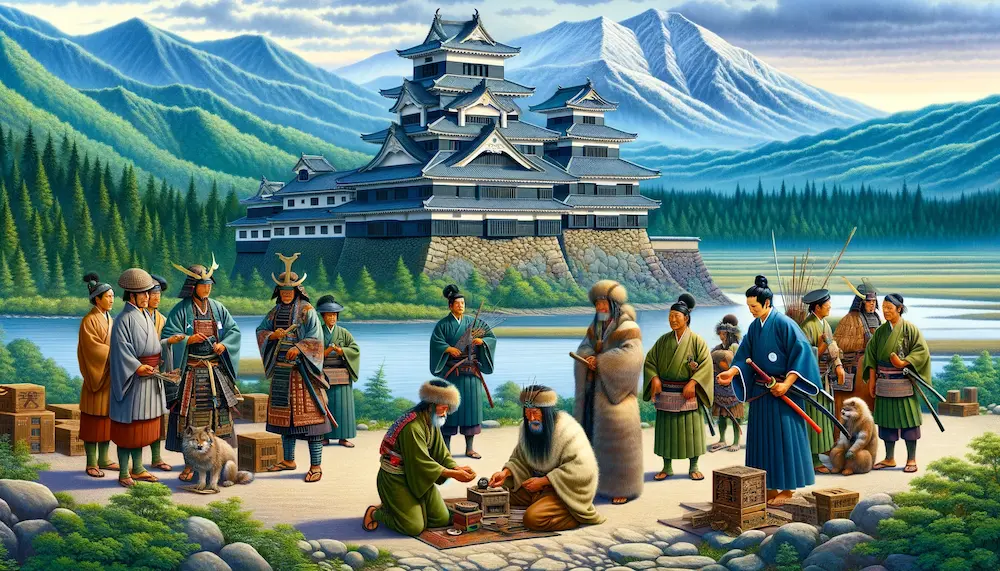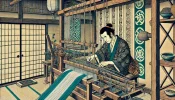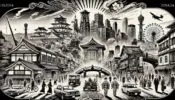Hokkaido in the Edo Period: Uncovering the Rich History of Ezochi and the Ainu
The Edo period (1603-1868) marked a significant chapter in the history of Hokkaido, known as Ezochi during this era. This period saw the strategic importance of Hokkaido rise as the Japanese shogunate extended its influence over the northern territories. The governance by the Matsumae clan and the trade relations with the indigenous Ainu people played crucial roles in shaping the socio-economic landscape of the region. This article explores Hokkaido’s position as Ezochi, the governance by the Matsumae clan, and the intricate trade relationships with the Ainu.
Hokkaido as Ezochi
During the Edo period, Hokkaido, referred to as Ezochi, was viewed as a remote and somewhat mysterious frontier by the Japanese mainland. The geographic location of Ezochi, situated to the north of Honshu, made it a region of strategic importance, especially for defense against potential threats from the north, such as Russia. The vast and resource-rich lands of Ezochi also presented opportunities for trade and expansion.
The shogunate’s interest in Ezochi was not merely territorial but also economic. The rich marine resources, particularly the abundant herring, salmon, and seaweed, were highly valued. The region’s fur-bearing animals, such as otters and foxes, were also significant for the burgeoning trade networks. Recognizing these potentials, the Tokugawa shogunate granted exclusive rights to the Matsumae clan to govern and trade in Ezochi.
Governance by the Matsumae Clan and Trade with the Ainu
The Matsumae clan, established in the southern part of Hokkaido, was granted the unique privilege of controlling trade and governance in Ezochi. This was a strategic decision by the shogunate to manage the region through a trusted feudal lord rather than direct administration. The Matsumae clan established a feudal domain centered in Matsumae Castle, from where they exerted control over the local economy and trade routes.
The relationship between the Matsumae clan and the Ainu people was primarily economic. The Ainu, who had lived in Hokkaido for centuries, engaged in extensive trade with the Matsumae. This trade was mutually beneficial; the Ainu provided valuable goods such as fish, fur, and medicinal plants, while the Matsumae offered rice, sake, ironware, and other Japanese goods in exchange. The Matsumae clan implemented a system of trade posts and intermediaries to facilitate these exchanges, often leading to the establishment of semi-permanent trading settlements.
However, this relationship was not without its tensions. The Matsumae’s monopolistic control over trade and resources led to economic dependency and sometimes exploitation of the Ainu. There were instances of conflict and rebellion, such as the Shakushain’s Revolt in the 1660s, where the Ainu leader Shakushain led a significant uprising against the Matsumae dominance. Despite these conflicts, the trade and cultural exchanges between the Ainu and the Matsumae continued to shape the social and economic dynamics of Ezochi.
Evolution of Ainu-Wajin Relations
The interactions between the Ainu and the Wajin (ethnic Japanese) evolved over time, influenced by trade, cultural exchanges, and conflicts. Initially, the relationship was relatively cooperative, with both groups benefiting from the exchange of goods and knowledge. The Ainu adopted certain aspects of Japanese culture, including some agricultural practices and material goods, while the Wajin learned about the rich natural resources of Ezochi from the Ainu.
However, as the Matsumae clan’s influence grew, so did the imbalances in power dynamics. The Matsumae’s efforts to assert greater control over the trade and resources often led to strained relations. The Ainu, who were traditionally semi-nomadic and relied heavily on hunting and fishing, found their way of life increasingly restricted by the expanding influence of the Matsumae. The introduction of Japanese agricultural practices and settlements disrupted traditional Ainu hunting grounds and fishing areas, exacerbating tensions.
These changes significantly impacted Ainu society. The loss of autonomy and economic independence forced many Ainu to integrate more closely with the Wajin settlers, adopting new ways of life. Despite these challenges, the Ainu managed to preserve many aspects of their cultural identity, although the pressure to assimilate into the dominant Japanese culture was ever-present.
Conclusion
The Edo period was a transformative era for Hokkaido, marked by the region’s integration into the broader Japanese political and economic sphere. The governance of the Matsumae clan and the complex trade relations with the Ainu played critical roles in this transformation. While the period saw significant cultural exchanges and economic development, it also brought challenges and conflicts that reshaped the traditional Ainu way of life.
Understanding the history of Hokkaido during the Edo period provides valuable insights into the region’s development and the enduring legacy of its indigenous people. As we explore these historical narratives, we gain a deeper appreciation for the resilience and cultural richness of Hokkaido and its inhabitants.









